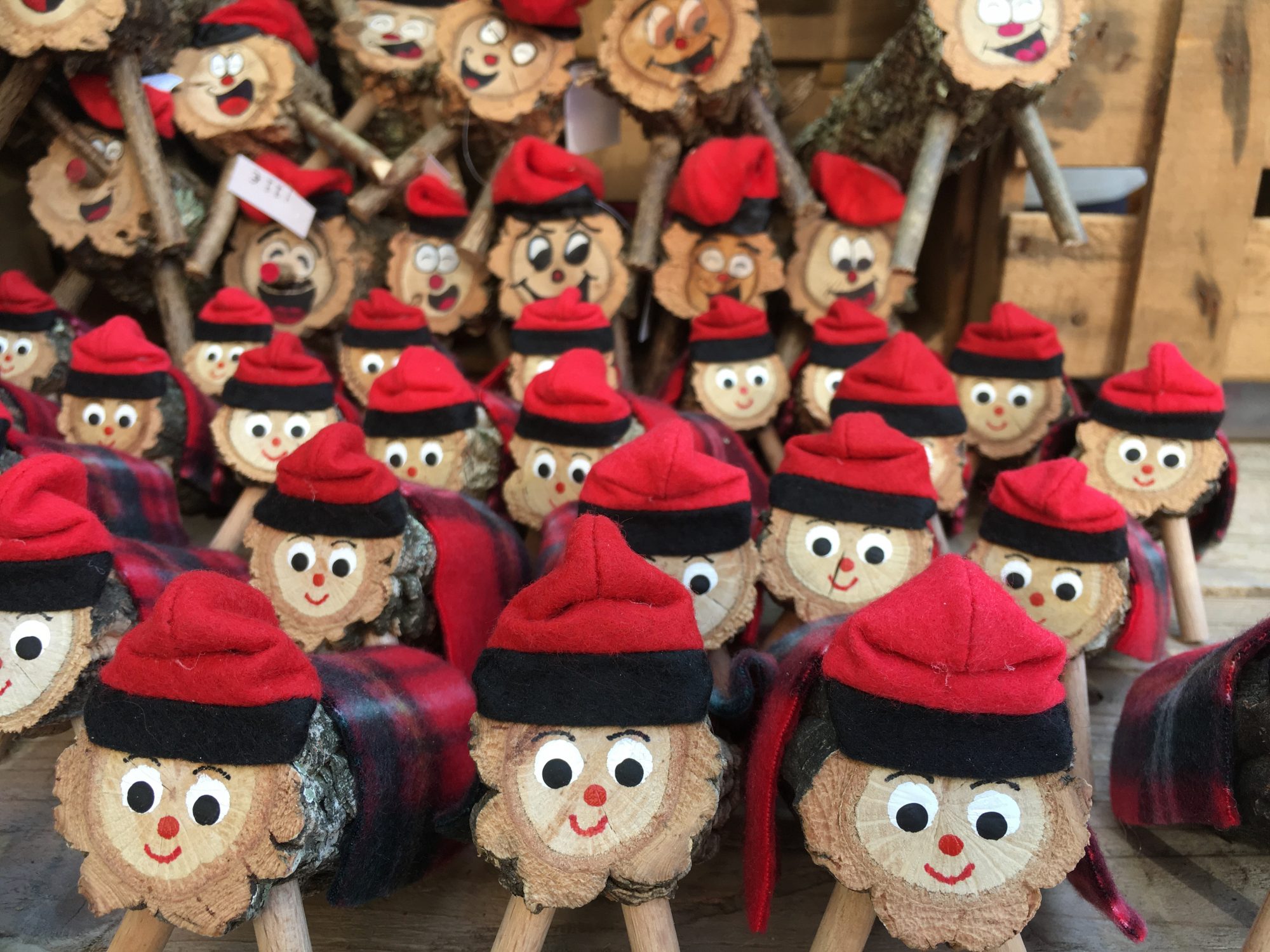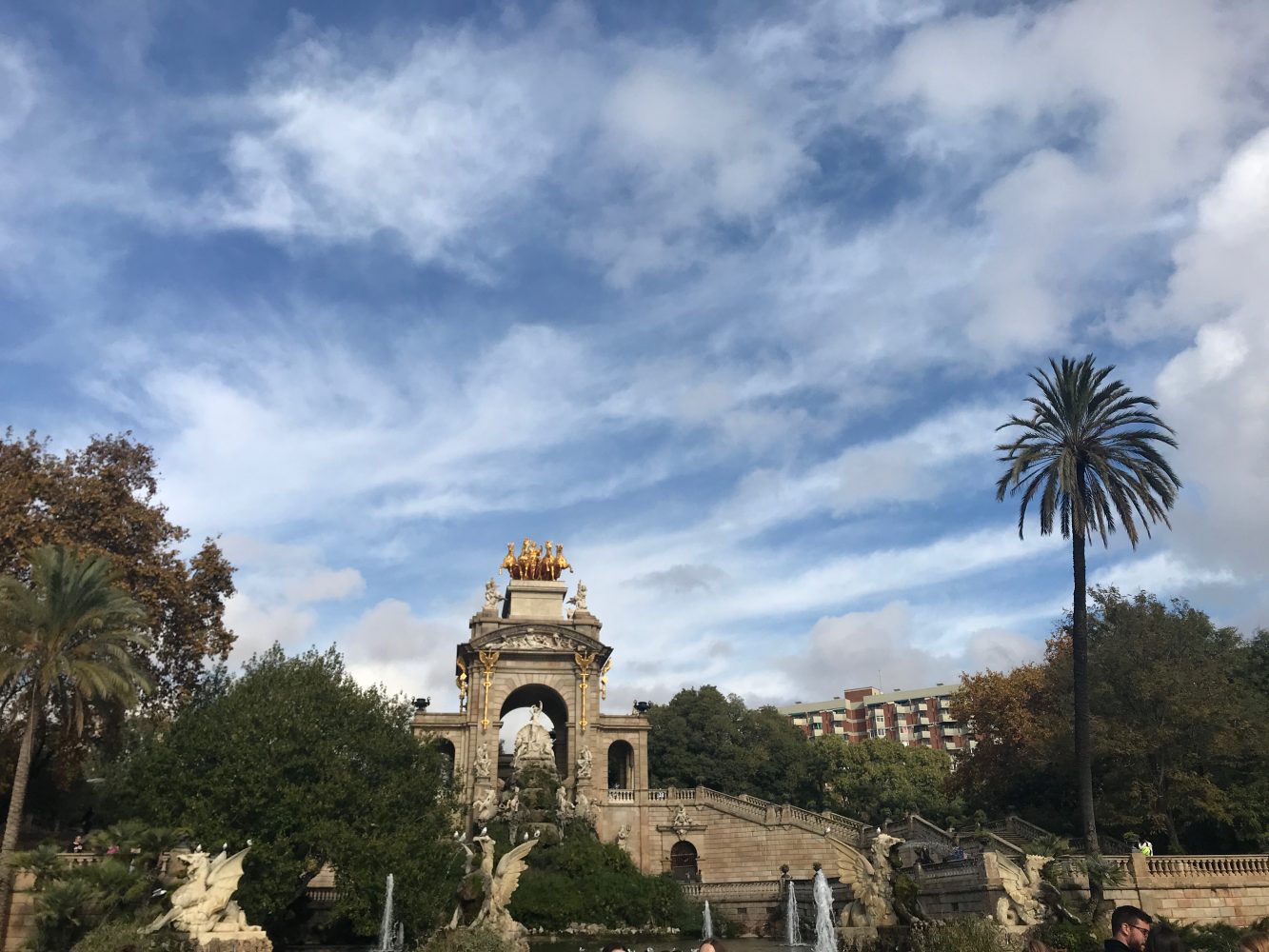Although Barcelona certainly won’t have a white Christmas, the holiday season will still be just as magical. From the moment the lights come on November 28th, the city transitions into a Spanish Christmas wonderland. Christmas fairs open, pesebres are constructed, and an impressive Christmas tree is set up in Plaza Sant Jaume. There are plenty of family-friendly holiday activities in Barcelona, and a world of unique Catalonian traditions to take part in, which makes the city a great holiday destination for families! 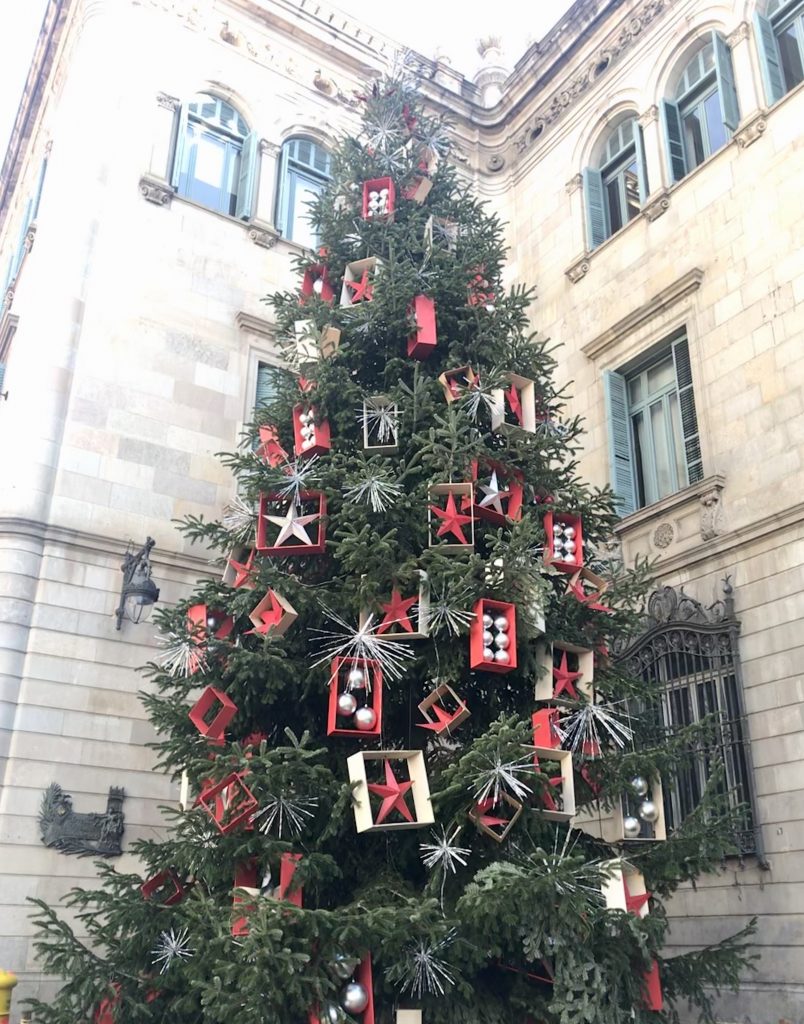
Catalan Christmas Traditions
While Christmas sentiment may be universal, Christmas traditions are not. And Catalonia, in particular, has some unique holiday customs. Some important Catalan customs are pesebres and the Cagatió and Caganer, which are somewhat shocking, but also a ton of fun!
Nativity Scenes
A pesebre is the Christian nativity scene and is one of the most important Christmas traditions in the Catalonian region. While Nativity scenes are a typical Christmas decoration in many places, Catalonia takes the custom to a whole new level. Most nativity scenes only depict the manger scene of Mary, Joseph, and Jesus, but in Catalonia, the pesebre encompasses the entire city of Bethlehem. The decoration is typical in Catalonia. It is often the focal point of local families’ Christmas decorations and somewhat replaces the traditional Christmas tree. Each year, the majority of Catalan families construct a Nativity Scene model with various little decorations and small figurines. Although the scenes may look like a dollhouse, the pesebres are typically very fragile, so make sure the kids are careful around them!
Caganer
Hidden among the small replica of Bethlehem, far from the manger scene, you will find the Caganer. This figurine, which depicts a man squatting and pooing, is one of the unusual, yet popular, Catalan holiday traditions. The original Caganer, which is believed to date back to the 17th century, is depicted in typical peasant clothes and the traditional Catalan red hat. Today, you can find all sorts of Caganer figurines, including celebrities and politicians. In many homes, children get to hide the silly statue somewhere in the back of the pesebre.
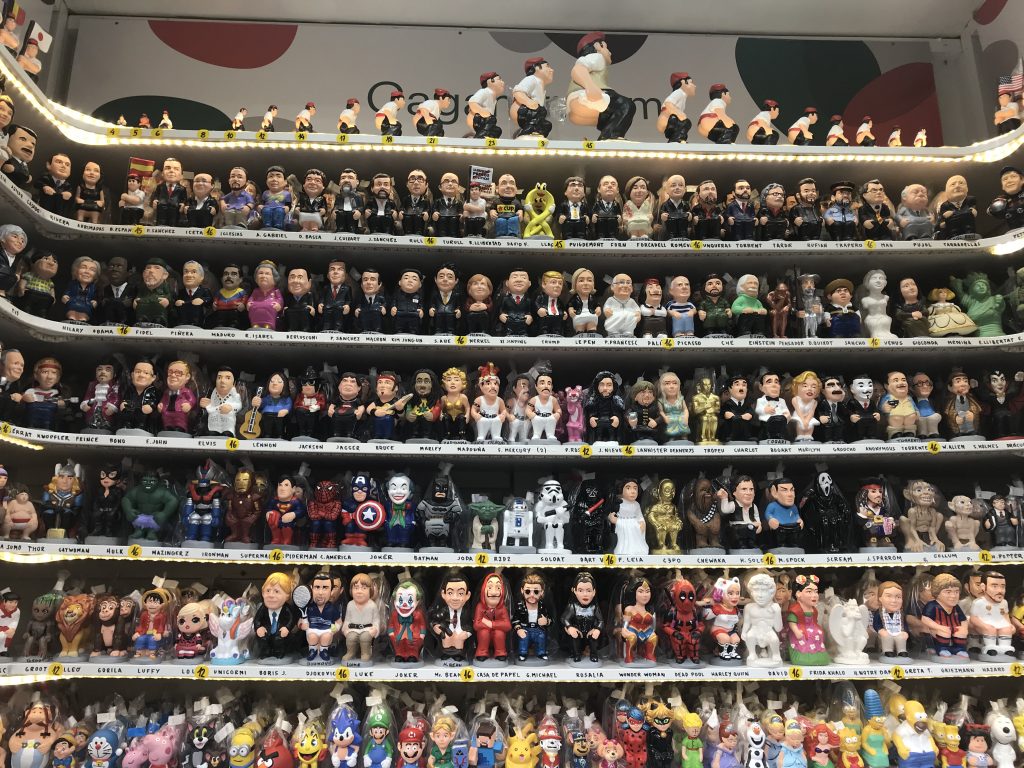
Cagatió
In addition to the Caganer, the Cagatió is another unique Christmas tradition only found in Catalonia. The Cagatió is a small log, with a painted-on face, who also sports the typical Catalan red hat. While Catalan children typically receive their Christmas gifts on Three Kings Day on January 6th, on Christmas Eve, they receive little presents from the Christmas log. The Cagatio usually brings some sweets and small gifts for children to share. According to local tradition, every year on December 8th, children begin to take care of their tió. Each night leading up to Christmas, the children “feed” the log and cover him with a blanket. Similar to the tradition of Santa eating cookies on Christmas Eve, by Christmas morning in Catalunya, the tió’s treats have been eaten.
On Christmas Eve, the children are sent into a different room, which gives the adults in the family the perfect opportunity to hide the treats under the tió’s blanket. After, the children gather around the log and sing the traditional tió song while beating the trunk with a stick. By hitting the wood, the children are making the tió ‘poo’ gifts. When they lift the blanket, they find candy and treats, like turrons and toffee, and even small gifts. However, the larger gifts are typically reserved for Three Kings Day on January 6th.
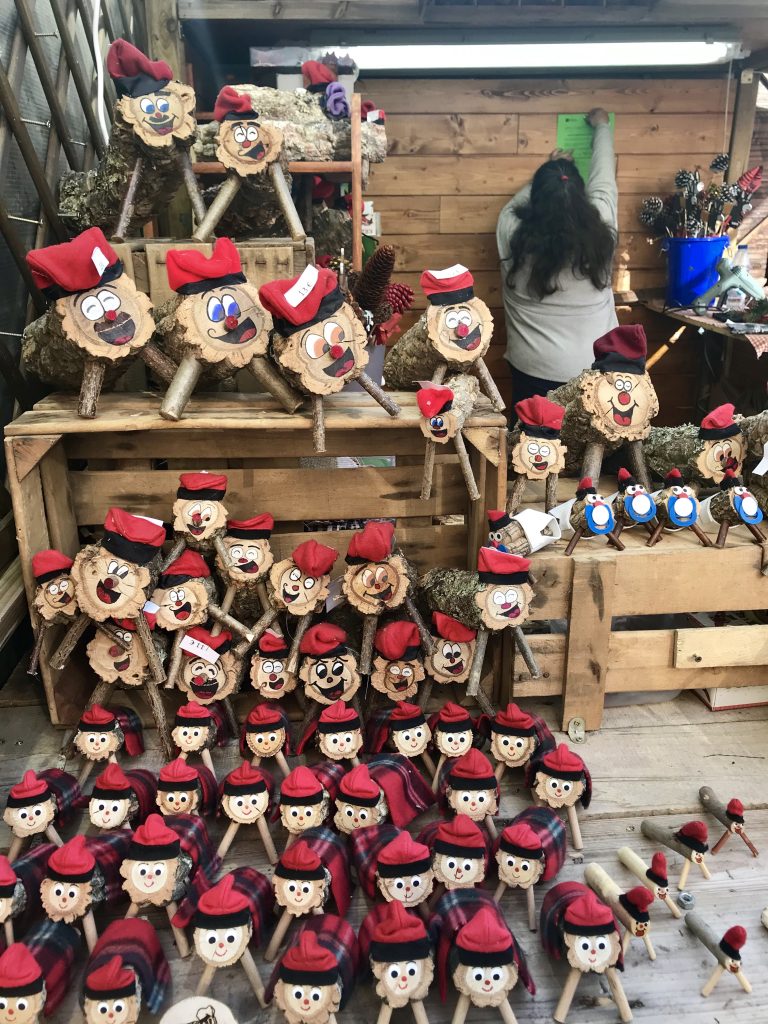 Things to Do During the Holiday Season
Things to Do During the Holiday Season
In addition to the beautiful decorations and unique Catalan traditions, there are many holiday activities to participate in the city.
Christmas Markets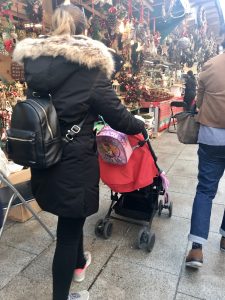
Anytime between November 28th and the beginning of January, Christmas markets dominate the city. The Fira de St. Llúcia and Fira de Nadal Sagrada Familia are two of our favorites.
Fira de St. Llúcia
The Fira de St. Llúcia, which dates back to 1786, is the oldest Christmas market in Spain and is located outside of the Barcelona Cathedral. There is plenty to see and buy at the market. You’ll find countless vendors selling traditional figurines
for nativity scenes, like moss, little trees, houses, and caganers. You’ll also find plenty of cagtiós, wreaths, mistletoe, ornaments, trees, and other artisan objects for sale. Since it is the biggest and oldest Christmas market in the city, Fira de St. Llucia is a popular destination. It is the best place to check out some of the unique Catalan Christmas traditions and shop around for gifts to bring back home. The little Cagatiós make great souvenirs for the kids in the family because they are both inexpensive and easy to pack. While the market is usually less crowded during the day, it is even more magical at night when the Christmas lights turn on and brighten up the city.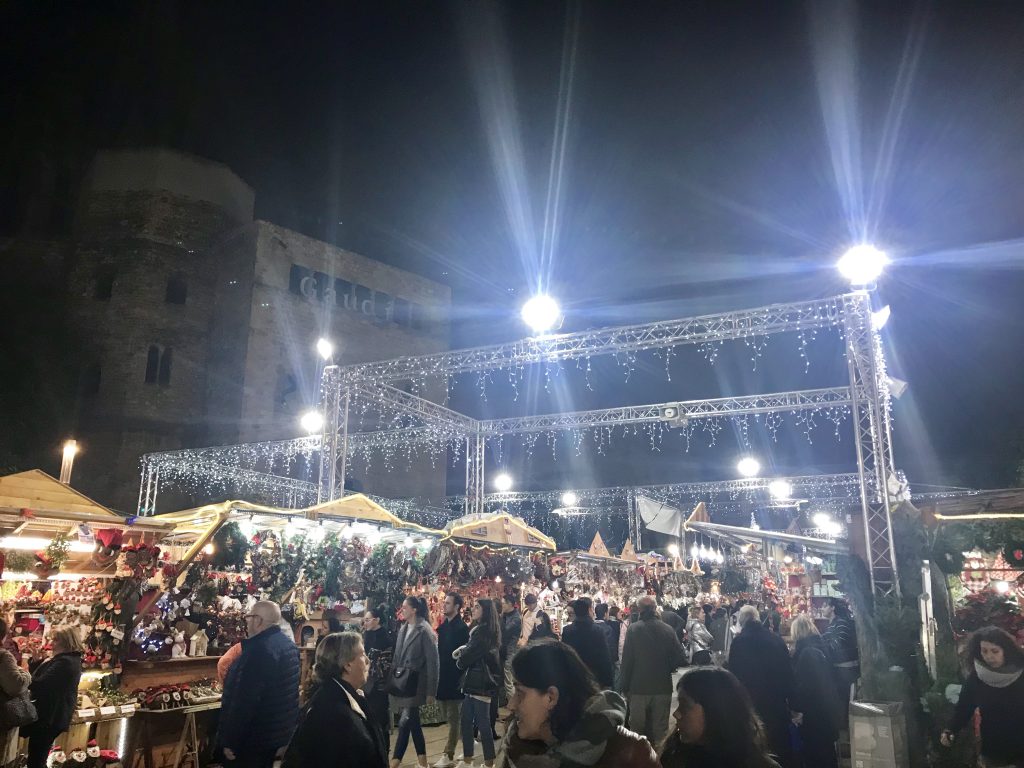
Fira de Nadal Segrada Familia
The Fira de Nadal Segrada Familia is another Christmas market worth visiting. This market was started in 1962 and is much smaller than the Fira de St. Llucia, but also much less crowded. At this market, you’ll also find Christmas trees and plants like poinsettias, pesebres, cagatiós, and other traditional figurines. There is also food, jewelry, clothes, and other potential gifts.
Nativity Scenes
After you have visited the St. Llucia market, Plaça Sant Jaume hosts the city’s most famous “nativity scene” and Christmas tree. This nativity scene, located outside of the Barcelona Town Hall, is nothing like you would expect. When one thinks of a nativity scene, they usually think of something traditional and religious. However, this display is anything but that. The modern take on the decoration is more like an art installation than anything else. While the display changes each year, this year, it depicts storage boxes and cabinets full of Christmas decorations ready to be set up or put away.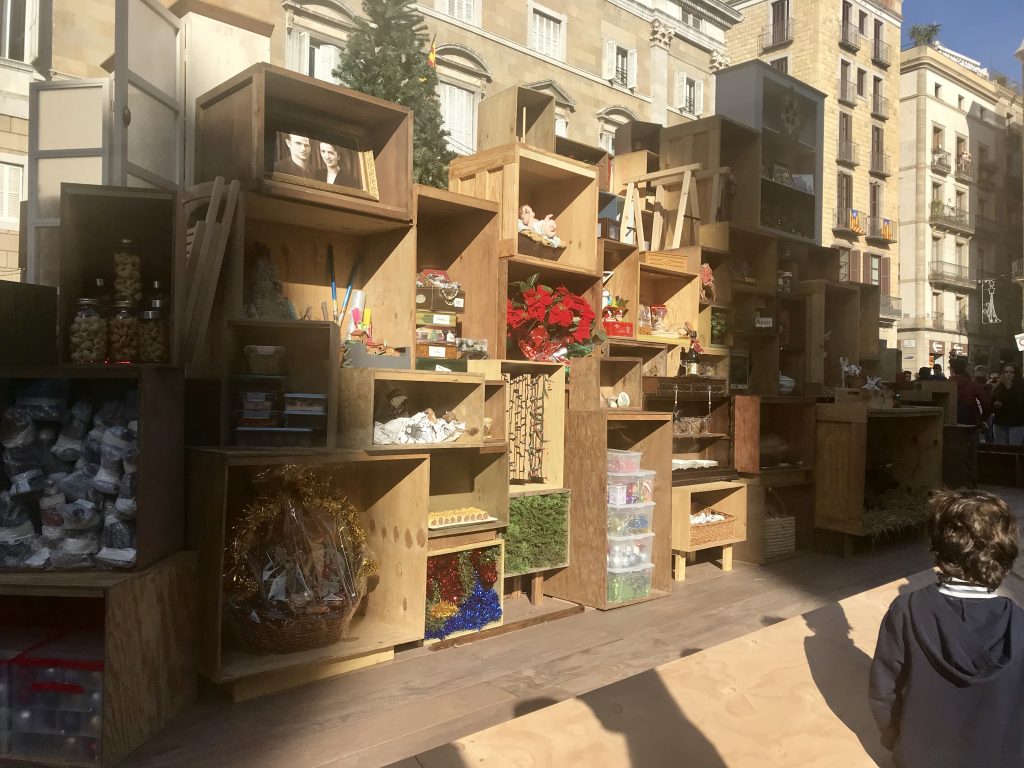
Unlike the scene on display in Plaça Sant Jaume, in the Barcelona Cathedral, you’ll find a traditional pesebre. Unsurprisingly, this nativity scene does not stray from the religious aspects of the tradition. It features all of the expected Christian figures, including the manger, shepherds, wise men, and Mary.
Käthe Wohlfahrt Christmas Store
After visiting the markets and pesebres, walk over to the Käthe Wohlfahrt German Christmas Store, which opened in Barcelona in 2019. While you won’t find any cagtiós or caganers, you will see some typical Christmas trees and a lot of Christmas ornaments. Although the store is beautiful, it is full of many fragile glass ornaments and decorations, so it may not be the best place to visit for a family with very young children, who may be inclined to touch things. If the kids are hungry for a snack after seeing all the Christmas decorations, stop for some Xurros con Xocolata at one of the churro shops on the street. The kids and adults in the family will love this traditional Catalan sweet treat!

More Information
Ready to see Barcelona during the Christmas season? Here is some more information…
Fira de St. Llúcia:
Adress: Avinguda de la Catedral
Dates: November 29th- December 23rd
Hours: Working days: from 11:00 to 20:30
Holidays and vigils: from 10:00 to 21:30
Fira de Nedal de Sagrada Familia
Adress: Plaça Sagrada Familia
Dates: November 23rd- December 23rd
Hours: Monday-Friday (and Holidays): 10am-9pm
Saturday and Sundays: 10AM-10PM
Käthe Wohlfahrt
Address: Carrer dels Banys Nous, 15, 08002 Barcelona
Hours: Monday-Saturday: 10am-8pm
Sunday: 12-6pm
What’s next?
Ready to explore more of the city? Enjoy a 10 to 15-minute walk through the Gothic Quarter into the neighborhood of El Born, to check out the picturesque Ciutadella Park.

